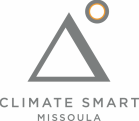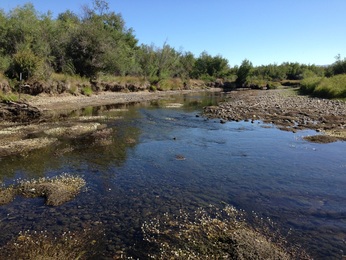 Low flow levels along the Upper Clark Fork Low flow levels along the Upper Clark Fork So, what’s the deal with water and climate change? Turns out, there are lots of connections. We dove in deep at our last monthly meetup, Thursday August 4th at Imagine Nation Brewing. We had sobering facts to consider, as well as good news to celebrate when it comes to water issues in Missoula. Chase Jones, the Energy Conservation Coordinator for the City of Missoula, said it best: Water is integral to the identity of our town. The Clark Fork River is, of course, not just a critical resource but also is the centerpiece of Missoula! One organization doing important work of keeping the river flowing and clean is the Clark Fork Coalition. Alex Leone, CFC’s Restoration Specialist, was on hand on Thursday to share about his work with the Montana Climate Office on the statewide Montana Climate Assessment, the results of which are due out next year and will focus on climate change impacts to water resources, agriculture, and forests. Alex also gave us an update on water flows, sharing the shocking news that he had just taken a flow measurement of only 2.6 cfs on the main stem of the Clark Fork almost 100 miles upriver from Missoula. Extremely low flows like this kill fish and aquatic organisms and reduce available water downstream, harming the overall health of the river. Low flows and warm water temperatures also are responsible for that pesky algae you might have seen in the river – usually, this algae gets cleared out by the tumbling action of water during peak runoff, but this year, peak runoff wasn’t high enough. These trends are likely to continue as climate change impacts spring snowmelt timing and quantities. 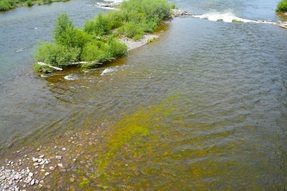 Algae in the Clark Fork River near Higgins bridge Algae in the Clark Fork River near Higgins bridge Agriculture is the major direct contributor to low flows along the Clark Fork, compounding snowmelt and peak runoff challenges. This is true elsewhere too: in Montana, agriculture accounts for 95% of water use. Greater understanding about the efficiency of flood irrigation versus overhead/sprinkler irrigation remains elusive, though much-discussed. It’s a much more complex issue than it seems on the surface: compared with sprinklers, with flood irrigation less water is absorbed by plants, but more water infiltrates through the soil and recharges the groundwater – and eventually returns to the river. Adding to the challenge of irrigation is the complexity of water rights and laws – currently, unlike the Blackfoot River, the upper Clark Fork doesn’t have a drought plan, which makes it nearly impossible to regulate water usage. Speaking of returning to the river, what about all the water that falls on our streets and flows through our pipes here in town? Travis Ross and Michelle Hutchins of the Missoula Valley Water Quality District gave us some insight into stormwater and wastewater issues. In Missoula, about 70% of our stormwater is returned to our aquifer, naturally treated through the process of infiltration on the way. This is great - less stormwater draining directly into the river means a cleaner river! On the wastewater treatment end, Missoula is also on the cutting edge: a large poplar plantation near the treatment plant receives nearly 1 million gallons a day of treated wastewater, feeding the trees (which are a great carbon sink!) and further filtering the water before it re-enters the river. Beth Schenk, the sustainability coordinator at St. Patrick Hospital, summarized the conversation well: “The lifecycle of water is important. We have a wonderful aquifer, but it matters what we put in it!” Water is clearly connected to so many other issues: waste, agriculture, even energy. Energy is one connection we don’t often think about. Not only is water a precious resource in and of itself, but pumping water to our homes and cleaning it at the wastewater treatment plant uses a ton of energy – the plant is by far the biggest municipal energy consumer. As Missoulians, conserving water helps support better water quality and quantity and reduce our carbon footprint at the same time! Water will continue to offer benefits as well as challenges in the years to come, especially as climate change impacts our region. That’s why we at Climate Smart are very excited about our City’s progress in the quest to own our water system. Local control over our water gives us the ability to talk about and deal with all the above issues and more, working for the good of our entire community!
2 Comments
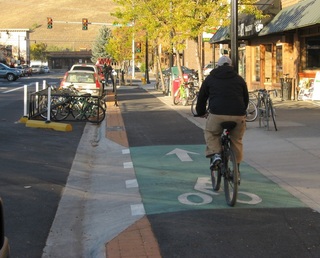 Photo: City of Missoula Photo: City of Missoula Did you know that the transportation sector is responsible for over 25% of greenhouse gas emissions in the United States? And more than half of those emissions come from passenger vehicles! That’s the bad news. Building a climate smart community has to include sustainable transportation that is affordable and accessible to everyone. The good news is that the wheels are turning here in Missoula and there is healthy movement happening – quite literally! At our July monthly meet-up last night at Imagine Nation Brewing Company, we were joined by advocates of sustainable transportation, including Jim Sayer, CEO of Adventure Cycling, Lisa Dworak with Missoula in Motion, and Caitlin and Julia, Missoula’s Bike Ambassadors, who shared their insights and ideas about how to keep momentum going. Here are just a few of our takeaways from the conversation. We’d love to hear your thoughts! Bicycle Boulevards and Barriers Missoula has been praised for being a bike-friendly community; among other accolades, the Travel Channel recently ranked Missoula among the top ten cycling cities in the U.S.! But biking isn’t just a popular pastime - for many Missoulians, their bike is the primary way to get around town. According to one survey, about 6 percent of us are bike commuters, good enough to earn us a rank of 11 out of US cities over 65,000 people. And we’ve got great organizations like Freecycles, Women Bike Missoula and Bike Walk Alliance Missoula - BWAM getting more bikers out riding. These are great accomplishments, but we can do even better! 70% of Missoulians still drive solo to work. Initiatives like Missoula In Motion’s Commuter Challenge prove it’s possible for more of us to bike, walk, bus, or carpool instead: during the most recent challenge, the number of people commuting by car every day dropped from 40% to 11%! Bike Ambassadors Caitlin and Julia reminded us that perceptions about safety are often the biggest barriers preventing more people from hopping on a bike. Group rides like Bikeapalooza (Sunday July 17th – meet downtown at 12pm!) are a great way to build bikers’ confidence and learn more about city bike routes. And when people get on a bike, they are more likely to be a bike-aware driver when they get behind the wheel of their cars. You might say it’s a positive cycle of safety! Transit: Smart Growth, Focus Inward Biking is great, but it’s not for everyone. And in the middle of winter, even the most dedicated bikers (and walkers!) can be deterred by snow and slush. We’re thrilled that Mountain Line’s zero-fare bus service has been so popular, and the new 15-minute frequent service on lines 1 and 2 is super convenient. We’d love to see expanded hours and Sunday service – maybe someday! In the meantime, the Our Missoula Growth Plan’s focus inward is a great start to planning more centralized development and better integrating transit into our neighborhoods, which will help make sustainable transportation more accessible for everyone. Join us in Being a Sustainable Transportation Advocate! Here at Climate Smart Missoula, we try to walk the walk. We’re proud to have won Missoula In Motion’s Transportation Best Practices Award for our commitment as an organization to sustainable transportation! Do you bike, walk, or take the bus? Do you wish it was even easier to do all three? Your voice matters to our community, and there are lots of ways to get involved!
I had a special relationship with the giant sycamore tree in my front yard growing up. I would climb into the upper branches, reveling in how different everything on the ground looked from my perch high in the air. Or I’d spend hours in the nearly perfect seat formed where the main trunk split into two, reading a book or studying the spotted bark and pointed leaves. Do you have a similar story? As we get older, we don't often stop to think about the trees that populate our neighborhoods, parks and open spaces. We all know trees are important. They beautify our city, they keep us cool, they give us clean air to breathe. How can we keep our trees happy and healthy? On June 2nd, Climate Smart Missoula’s monthly meetup was all about trees. We were joined by Karen Sippy from the citizen advocacy group Trees for Missoula, Chris Carlson from the City of Missoula Parks and Recreation Dept, Juliet Slutzger from the National Wildlife Federation, and curious community members. Here’s what we learned:
Wondering what you can do to help keep our urban forest in tip top shape?
As we experience hotter, drier summers, caring for our trees and growing more shade will be increasingly important. Check out our Summer Smart program and our Urban and Wildland Forests bucket to learn more! On May 5th, Missoula community members gathered to learn and talk about local food and agriculture and climate change. Kim Gilchrist with the Community Food and Agriculture Coalition (CFAC) started us off with an overview of the food system, tracing the steps that get our food from farm to fork. She described the work that CFAC is doing to support farmers and farmland and improve access to local food for all members of our community, including the Double Snap Dollars program. Greg Price of Garden City Harvest described the climate change impacts he’s observed in his 15 years of experience as the manager of River Road Neighborhood Farm. Greg explained that climate change has brought tradeoffs between a longer growing season on one hand, and more extreme heat and less water for irrigation on the other. Caroline Stephens, produce manager at Foothill Farm, also shared about her graduate research interviewing Montana farmers about drought and climate change.
Missoula is known for its vibrant local food scene, with farmers’ markets buzzing on Saturday mornings, restaurants featuring local produce, and thriving community gardens. For many Missoulians, our local food culture is part of what makes Missoula a great place to live. But the abundance and diversity of local food and sustainable agriculture also increases our community’s resilience to climate change. When we produce more of our food nearby, we are less dependent on global and national supply chains that are vulnerable to climate impacts, and we strengthen our local economy. Food hubs, such as the Western Montana Growers’ Co-op, aggregate produce from many farms and distribute it to grocery stores and institutions like schools and hospitals, and help connect small farmers with more diverse markets. And when local sustainable agriculture is combined with efforts to reduce food waste, we shrink the carbon footprint of our entire food system, making our community healthier and more sustainable in the long run. Interested in learning more about how Climate Smart Missoula and community partners are working on this issue? Check out our Local Food and Agriculture bucket. |
AuthorsAbby Huseth Archives
November 2023
Categories
All
|
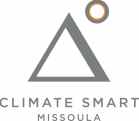
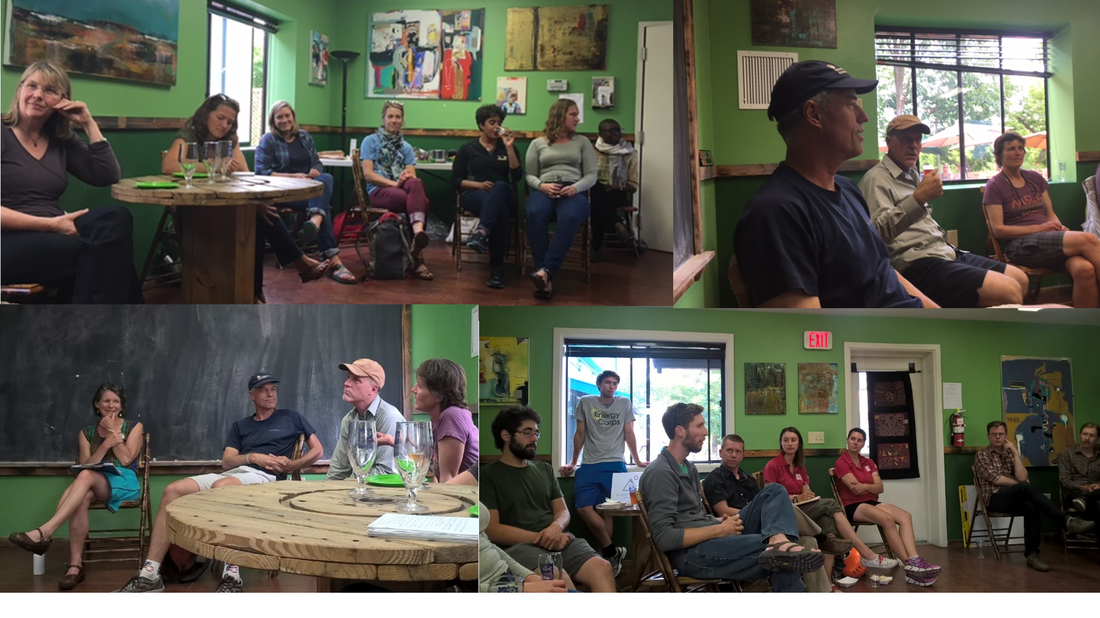
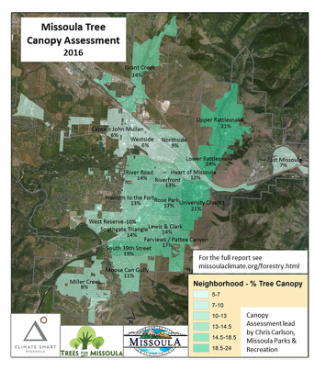
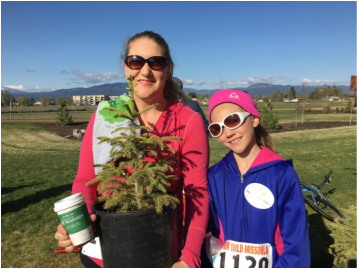
 RSS Feed
RSS Feed


